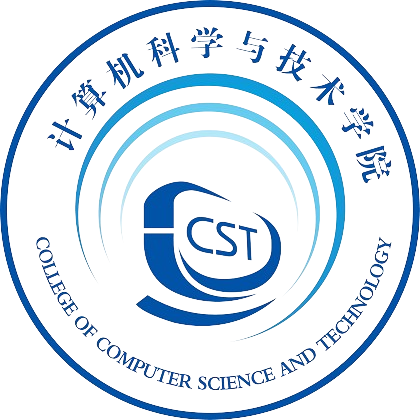
范自柱
发布日期:2024-06-03 浏览次数:1286
| 姓名:范自柱 | 性别:男 |
| 学历:博士研究生 | 职称:教授 | |
| 电话: | Email:zzfan3@shiep.edu.cn | |
| 系所:计算机系 | 办公地址:计电楼A510 | |
| 个人简介: 范自柱,博士,教授,2003年毕业于合肥工业大学计算机软件与理论专业获工学硕士学位,2014年毕业于哈尔滨工业大学计算机应用技术专业获工学博士学位。2015年9月-2016年9月美国加州大学圣塔芭芭拉分校访问学者。 主要研究方向为模式识别与机器学习理论及其在计算机视觉和智能电网等领域的应用。 目前发表SCI检索期刊论文30余篇,出版专著2部,先后有2篇论文入选ESI高被引目录。主持国家自然科学基金重大项目课题、面上项目等多项科研项目,中国自动化学会大数据专业委员会委员,华东交通大学学报编委。 | ||
| 研究方向: 理论方向:模式识别与机器学习,可解释性人工智能; 应用方向:计算机视觉,智能电网等。 | ||
| 主讲课程: 机器学习,人工智能,算法设计与分析等。 | ||
| 科研成果: 代表性论文: [1] Z. Fan, L. Shi, Q. Liu, Z. Li and Z. Zhang, Discriminative Fisher Embedding Dictionary Transfer Learning for Object Recognition, IEEE Transactions on Neural Networks and Learning Systems, vol. 34, no.1, pp.64-78, 2023. [2] C. Xi, Z. Fan*, C. Peng, Q. Liu, H. Wang, Semi-Supervised Multiview Fuzzy Broad Learning, Information Sciences, DOI: 10.1016/j.ins.2024.120625, 2024. [3] C. Wei, F. Han, Z. Fan*, L. Shi, C. Peng, Efficient License Plate Recognition in Unconstrained Scenarios, Journal of Visual Communication and Image Representation, 2024 (Accepted) [4] Z. Fan, Y. Huang, C. Xi , and Q. Liu. Multiview Adaptive K-Nearest Neighbor Classification,IEEE Transactions on Artificial Intelligence, 2023, DOI:10.1109/ TAI.2023.3296092. [5] Z. Fan, Y. Huang, C. Xi, C. Peng and S. Wang,Semi-supervised Fuzzy Broad Learning System based on Mean-Teacher Model,Pattern Analysis and Applications, Vol.27, DOI: 10.1007/s10044-024 -01217-8, 2024. [6] Z. Fan, L. Shi, C. Xi, H. Wang, S. Wang and G. Wu,Real Time Power Equipment Meter Recognition based on Deep Learning, IEEE Transactions on Instrumentation and Measurement, DOI: 10.1109/TIM.2022.3191709, 2022. [7] L. Shi, Z. Zhang, Z. Fan, C. Xi, Z. Li, G. Wu, Kernel Fisher Dictionary Transfer Learning, ACM Transactions on Knowledge Discovery from Data, Volume 17, Issue 8, pp 1–17, https://doi.org/10. 1145/3588575. [8] Q. Liu, Y. Zhang, X. Si, Z. Fan, DLVR-NWP: A Novel Data-Driven Bearing Degradation Model for RUL Estimation, IEEE Transactions on Instrumentation and Measurement, DOI.10.1109/TIM.2023. 3244839. [9] Q. Liu*, Y. Zhu, G. Wu and Z. Fan, Disturbance Robust Abnormality Diagnosis of Fused Magnesium Furnaces Using Deep Neural Networks, IEEE Transactions on Artificial Intelligence, Vol. 4, no. 4, pp. 669 - 678, 2023. [10] Q. Zhu, H Li, H Ye, Z Zhang, R Wang, Z. Fan, and D Zhang*, Incomplete Multi-Modal Brain Image Fusion for Epilepsy Classification,Information Sciences,Vol.582, pp. 316-333, 2022. [11] Z. Fan, H. Zhang, Z. Zhang, G. Lu and Y. Zhang, A Survey of Crowd Counting and Density Estimation based on Convolutional Neural Network, Neurocomputing, vol. 472, 224-251, 2022. [12] J. Jiang, F. Han*, J. Wang, Q. Ling, H. Han, Z. Fan. Improving Decomposition-based Multiobjective Evolutionary Algorithm with Local Reference Point Aided Search, Information Sciences, Vol. 576, pp. 557-576, 2021. [13] W. Zhang*, X. Xue, X. Zheng, and Z. Fan, NMFLRR: Clustering scRNA-seq data by integrating non-negative matrix factorization with low rank representation, IEEE Journal of Biomedical and Health Informatics, pp. 2168-2194, 2021. [14] Y. Cao*, N. Li,Z. Zhang, Z. Fan. Two space-time methods for solving Burgers equation, Engineering Analysis with Boundary Elements. Vol.133, pp. 248-254, 2021. [15] Z. Fan, and C Wei. Fast Kernel Sparse Representation Based Classification for Undersampling Problem in Face Recognition, Multimedia Tools and Applications, vol.79, no.11, pp. 7319-7337, 2020. [16] S. Wang, Z. Fan*, Z. Li, H. and C. Wei. An Effective Lunar Crater Recognition Algorithm Based on Convolutional Neural Network, Remote Sensing, vol.12, no.17, 2694, 2020. [17] Z. Fan, D. Zhang, X. Wang, Q. Zhuand Y. Wang. Virtual Dictionary based Kernel Sparse Representation for Face Recognition. Pattern Recognition, vol. 76, pp. 1-13, 2018. [18] Z. Fan, Y.Xu, M. Ni, X. Fang, and D. Zhang.Individualized Learning for Improving Kernel Fisher Discriminant Analysis. Pattern Recognition, vol.58, pp.100-109, 2016. [19] Z. Fan, Y. Xu*, W. Zuo,J.Yang, J. Tang, Z. Lai and D. Zhang. Modified Principal Component Analysis: An Integration of Multiple Similarity Subspace Models.IEEE Transaction on neural network and learning systems, vol.25, no. 8, pp.1538-1552, 2014. [20] Z. Fan, Y. Xu, and D. Zhang, Local linear discriminant analysis framework using sample neighbors,IEEE Transactions on Neural Networks, vol.22, no.7, pp.1119-1132, 2011. [21] Z. Fan, M. Ni, Q. Zhu, and E. Liu. Weighted Sparse Representation for Face Recognition. Neurocomputing, vol. 151, pp. 304-309, 2015. [22] Z. Fan, M. Ni, Q. Zhu and C. Sun.L0-norm Sparse Representation Based on Modified Genetic Algorithm, Journal of Visual Communication and Image Representation, Vol. 28, pp.15-20, 2015. [23] Z. Fan and M. Ni, Individualized Boosting Learning for Classification, International Journal for Light and Electron Optics, vol. 126, no. 24, pp.5733–5739, 2015. [24] Z. Fan, J. Wang, B.Xu, and P. Tang, An efficient KPCA algorithm based on feature correlation evaluation,Neural Computing and Applications, vol.24, no.7, pp.1795-1806, 2014. [25] Z. Fan, J. Wang, Q. Zhu, X. Fang, J. Cui and C. Li. Local Minimum Squared Error for Face and Handwritten Character Recognition, Journal of Electronic Imaging, 22 (3), 033027, 2013. [26] Z. Li, Z. Zhang*, Z. Fan, and J. Wen, An interactively constrained discriminative dictionary learning algorithm for image classification, Engineering Applications of Artificial Intelligence, vol. 72, pp. 241-252, 2018. [27] Y Lu, Z Lai*, Z. Fan, J Cui and Q. Zh. Manifold discriminant regression learning for image classification, Neurocomputing, vol. 166, pp. 475–486, 2015. [28] J. Cui*, J. Wen, and Z. Fan, Appearance-based bidirectional representation for palmprint recognition,Multimedia Tools and Applications, vol.74, no. 24,pp. 10989-11001, 2015. [29] X. Fang, Y. Xu*, X. Li, Z. Fan, H. Liu, and Y. Chen. Locality and Similarity Preserving Embedding for Feature Selection, Neurocomputing, vol. 128, pp.304-315, 2014. [30] Y. Xu*, Q. Zhu, Z. Fan, D. Zhang, J. Mi, and Z. Lai, Using the idea of the sparse representation to perform coarse to fine face recognition, Information Sciences, vol. 238, pp:138-148, 2013. [31] Y. Xu*, W. Zuo,and Z. Fan, Supervised sparse representation method with a heuristic strategy and face recognition experiments, Neurocomputing, vol.79, pp.125-131, 2012. [32] Y. Xu*, Z. Fan, M. Qiu, D. Zhang, et al., A sparse representation method of bimodal biometrics and palmprint recognition experiments, Neurocomputing, vol. 103, pp. 164–171, 2013. [33] Y. Xu*, Q. Zhu, Z. Fan, M. Qiu, Y. Chen and H. Liu, Coarse to fine K nearest neighbor classifier, Pattern Recognition Letters,vol.34, pp:980-986, 2013. [34] Y. Xu*, Q. Zhu, Z. Fan, Y. Wang, and J. Pan, From the idea of ‘‘sparse representation’’to a representation-based transformation method for feature extraction, Neurocomputing, vol. 113, pp:168-176, 2013. [35] Q. zhu*, Z. Li, J. Liu, Z. Fan, L.Yu, Y. Chen, Improved Minimum Squared Error Algorithm with Applications to Face Recognition, PLOS one, vol.8, no.8, e70370, 2013. [36] Y. Xu*, Z. Fan, and Q. Zhu, Feature space-based human face image representation and recognition, Optical Engineering,51(1), 017205,2012. [37] Z. Fan, M. Ni and L. Kang. Automatically select kernel parameters using generalized entropy,ICIC Express Letters, vol.9, no.2, pp.537-542, 2015. [38] 胡磊, 刘强*, 吴永建, 范自柱, 间歇过程动态潜结构阶段划分与在线监控, 控制理论与应用,pp. 1-9, 2021. [39] 石林瑞, 黄祎婧, 符进武, 郭心悦, 范自柱*. 特征空间中基于半遗传稀疏表示的图像识别. 智能科学与技术学报, 3(3): 359-369, 2021. [40] 王辉,吴雨杰,范自柱,杨辉*,基于深度学习的铁路限界快速检测算法,铁路科学与工程学报,已录用,2022. [41] 符进武,范自柱*,石林瑞,郭心悦,黄祎婧,基于多尺度多粒度融合的行人重识别方法,计算机工程,48(3):271-279,2022. 专著: [42] 范自柱,新型特征抽取算法研究,中国科学技术大学出版社,合肥,2016. [43] 徐勇,范自柱,张大鹏. 基于稀疏算法的人脸识别,国防工业出版社,北京,2014. 国家发明专利: [44] 王辉,姜朱丰,华姝雅,李欣怡,范自柱,杨辉. 一种多模态图像融合方法、装置及设备,专利号ZL 2023 1 0638962.9, 2023 [45] 王辉,韩星宇,范自柱,杨辉. 基于Transformer的孪生多模态目标跟踪方法, 专利号:202211376018.2,2023 [46] 王辉,黄宇廷,范自柱,杨辉. 基于属性的多模态可解释分类的方法与系统, 专利号:202211206014.X, 2022 [47] 王松,范自柱,魏超,张泓。一种基于深度学习的月球撞击坑识别方法,专利号:ZL 2019105898413,2022 [48] 范自柱,倪明,康利攀。一种小样本情况下多稀疏表示的人脸识别方法,专利号:ZL 201410488550.2, 2017 荣誉奖项: 2020年江西省高校井冈学者特聘教授 2018年江西省自然科学奖二等奖,新型特征抽取算法应用研究,排名第一 2014年黑龙江省自然科学奖二等奖,生物特征识别中的特征抽取与特征表达方法,排名第四 | ||
| 科研项目: [1] 国家自然科学基金重大项目课题:复杂环境下重大耗能设备运行工况智能识别方法,437万元,在研 [2] 国家自然科学基金面上项目:特征空间中的稀疏表示及其分类研究,80万,已结题 [3] 国家自然科学基金地区项目:大规模数据的个性化分类学习,45万,已结题 [4] 江西省自然科学基金重点项目:小样本深度核稀疏网络及其在电力设备图像中的检测与识别研究,20万,已结题 | ||


